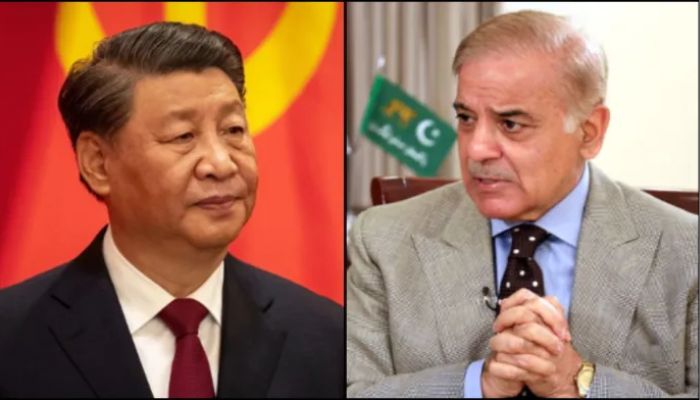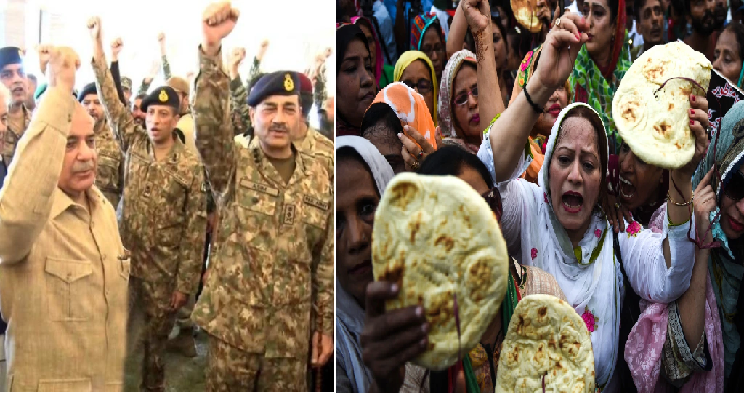
- Pakistan has launched a fresh military campaign against terrorism, supposedly guided by Beijing. The military campaign, known as “Azm-e-Istehkam,” seeks to end terrorism across the country.
- It is evident that the third military action is being conducted to appease the Chinese as terror attacks were seriously endangering the physical safety of Chinese labourers employed for CPEC.
- Pakistan has harboured numerous terror groups on the pretext of combating them and as a result, it is now facing a serious security threat from the same terrorist organisations and militancy.
In response to the problems caused by militancy and extremism in the country, the Pakistani government has authorized “Azm-e-Istehkam”, which translates to “Resolve for Stability” in Urdu, as a new counterterrorism initiative. The operation is being carried out concurrently with intelligence-based counterterrorism operations, which are mostly being carried out in Balochistan, Khyber Pakhtunkhwa province, and areas bordering Afghanistan.
Like the country’s annual budgets, military operations by the Pakistan Army against Islamist radicals and terrorists appear to be intended to address pressing issues but ultimately fall short because they neglect to address the structural causes that initially gave rise to the problem. Similar to budgets, military operations are also frequently planned and organized to please and pacify foreign organisations, such as the International Monetary Fund (IMF) in the case of budgetary matters and China, to a greater extent in the case of counterterrorism operations.
Geopolitical Tensions and Military Operations: The China-Pakistan Dynamic Amidst Regional Instability

What is evident, though, is that this is the third military action being conducted to appease the Chinese. The Lal Masjid operation began in 2007 after Islamist radicals in the mosque invaded a Chinese massage parlour and kidnapped the Chinese workers. This action served as the impetus for the formation of Tehrik-e-Taliban Pakistan and caused a sharp increase in terrorist activity within Pakistan. The Chinese government is said to have placed a great deal of pressure on Pervez Musharraf, the military dictator at that time, to send the Army to clean up the Lal Masjid. Pakistan’s desire to reassure the Chinese that the Zarb-e-Azb operation was directed at Uyghur insurgents also played a role in the operation. The Chinese were incensed by the recent attacks on them, the most recent of which was the suicide bombing of a bus carrying Chinese engineers working on the Dash Dam Project in March. The Chinese had been repeatedly assured by the Pakistanis of impenetrable security.
The China-Pakistan Economic Corridor (CPEC) was not only proving to be a financially disastrous endeavour for China, but it was also seriously endangering the physical safety of Chinese labourers employed in Pakistan. The Pakistanis were informed that any further Chinese investments were conditional on Pakistan resolving the issue of offering security to the Chinese labourers. Though there was much fanfare around Shehbaz Sarif’s June visit to Beijing, not much happened in terms of significant progress between China and Pakistan. There have been a lot of rumours circulating that the two relationships are cooling off. When the China-Pakistan Economic Corridor (CPEC) was first announced ten years ago, it was anticipated that the Chinese would show more interest in the economic aspects of the relationship.
In addition to the China factor, there is concern that Operation Azm-i-Istehkam could worsen Pakistan’s already strained ties with the Taliban government. Cross-border operations against TTP strongholds in Afghanistan on March 8, 2024, heightened tensions between Islamabad and Kabul. Furthermore, Islamabad keeps saying that it won’t think twice about carrying out another strike of this nature. Pakistan’s relations with its Western neighbours are predicted to face additional difficulties going forward, since Azm-i-Istehkam seeks regional collaboration in combating terrorism and hence alludes to tactical cross-border attacks, including those that occur within Afghanistan and Iran. Pakistan, however, has asked the US for “small arms and modern equipment.”
Pakistan’s Complex Counterterrorism Strategy Amidst Socioeconomic and Political Challenges

Pakistan’s terrorist problem is multifaceted, involving criminality, drug trafficking, smuggling, radicals driven by religion, and official sponsorship. However, it appears that no well-thought-out policy is in place to address the issue and effectively refute the extreme narrative.
Although military action is necessary to combat the most recent wave of terrorism in Pakistan, there are concerns about the extent to which force can be used to neutralize the danger. Without a doubt, when necessary, the state must use force. However, unless combined with additional measures this is not particularly effective. Without widespread political support, it is impossible to combat the threat posed by violent extremism.
Confusion by nature: Operation Azm-i-Istehkam, consisted of two parts. The “award of exemplary punishments” to terrorists was also to be a goal of the “renewed and full-blown kinetic efforts of the armed forces,” with “full support from all law enforcement agencies, empowered by effective legislation.” Conversely, it is intended to be “appropriately supplemented by socioeconomic measures intended to address legitimate concerns of the people and create an environment that discourages extremist tendencies.” The collateral displacements and effects on daily life in places where a full-swing kinetic operation is implemented are generally met with a great deal of criticism. It is possible that Islamabad chose to highlight the operation’s more delicate elements for this purpose. However, the mistake stems from a later clarification from the Pakistani PMO that says Azm-i-Istehkam is not a large-scale kinetic military action. Since earlier kinetic attacks have “decisively degraded Pakistan,” the statement said, “no large-scale military operation is being contemplated where displacement of population will be required.” This indicates that the Sharif administration is merely experimenting with a very shady counterterrorism strategy.
Nothing significant has been accomplished in Pakistan’s fight against terrorism, despite the country’s numerous military actions. In contrast, Pakistan was able to support terrorism for many years on the pretext of combating it. As a result, Islamabad is facing a serious security threat from the emergence of terrorist organisations and militancy. As prime minister, Shehbaz Sharif declared plans for an anti-terror operation in April 2023, but it never happened. There are a lot of reasons to think that Operation Azmi-Istehkam will just end up being another Pakistani operation.
CITATIONS AND REFERENCES:
- NEWS DESK, A. (2024). Azm-e-Istehkam Operation: Human Rights Commission of Pakistan calls for rights protection in Balochistan, KP: https://aninews.in/news/world/asia/azm-e-istehkam-operation-human-rights-commission-of-pakistan-calls-for-rights-protection-in-balochistan-kp20240709211050/
- ns, S. (2024, July 4). Azm-e-Istehkam. The Statesman. https://www.thestatesman.com/opinion/azm-e-istehkam-1503316637.html
- Sareen, S. (2024, July 9). Azm-e-Istehkam depends on Azm-e-Imran: Why Pakistan Army dilutes its new anti-terror operation. Firstpost. https://www.firstpost.com/opinion/azm-e-istehkam-depends-on-azm-e-imran-why-pakistan-army-dilutes-its-new-anti-terror-operation-13791149.html
Prajwal K M holds a Master’s in Diplomacy, Law, and Business with a specialization in Economics and Foreign Policy. He is currently a consultant at the Nation First Policy Research Centre (NFPRC), a Delhi-based think tank working on policy design and implementation with the government. Formerly Deputy Editor at SamvadaWorld, his work focuses on the political and economic landscapes of West Asia and North Africa.
